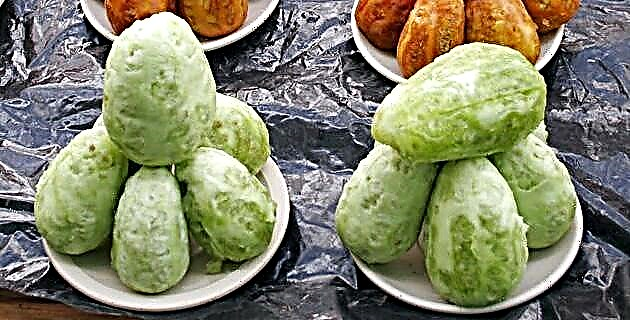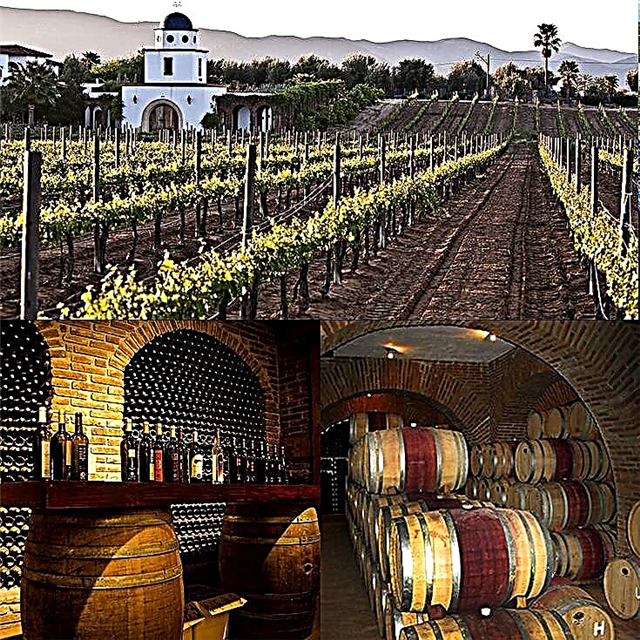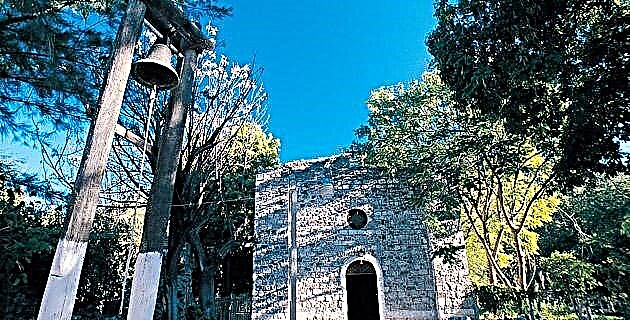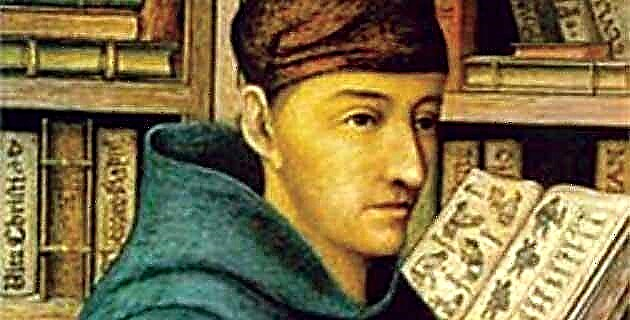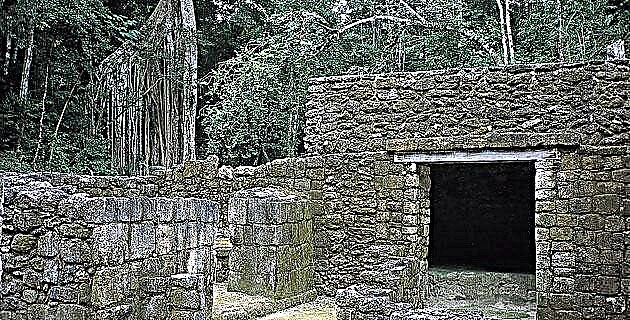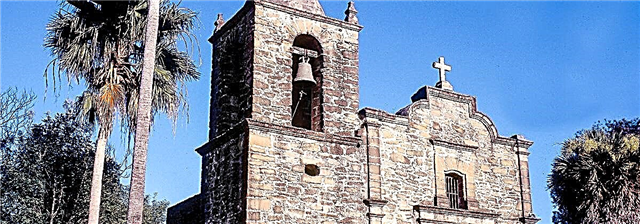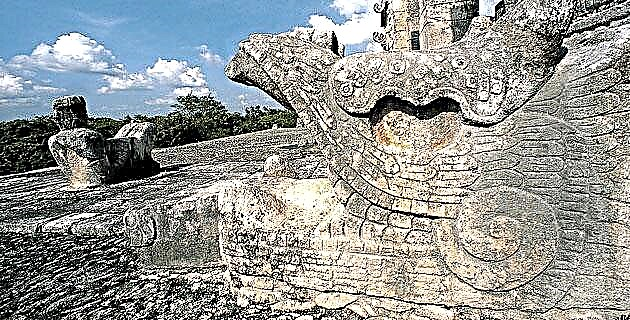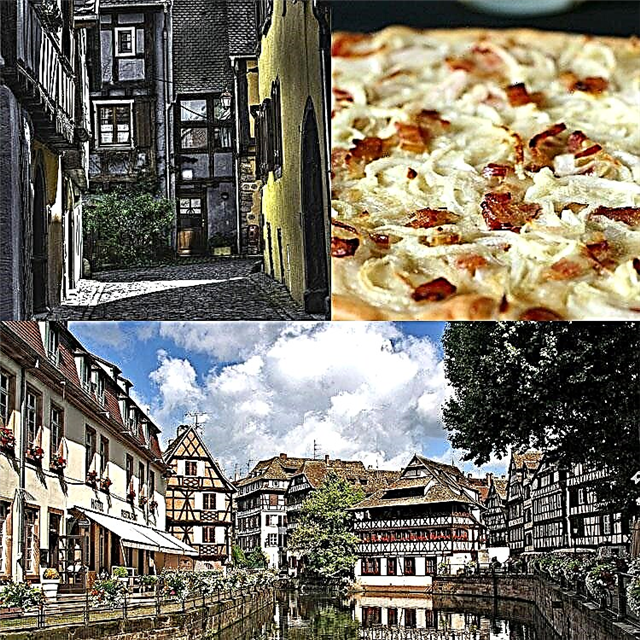The French region of Alsace, on the border with Germany and Switzerland, has villages with dreamy residential architecture, ancient monuments, extensive vineyards where the grapes for exquisite wines and an appetizing cuisine will make your trip through the this of France is unforgettable.
1. Grand Ile de Strasbourg

Strasbourg is the main city of Alsace and the Grande Ile (the Big Island), its historic center, is a World Heritage Site. It is a fluvial island on the river III, a tributary of the Rhine. This old town is typically medieval and houses the most important monuments, such as the cathedral, the churches of Saint Stephen, Saint Thomas, Saint Peter the Old and Saint Peter the Younger. and some beautiful bridges through which it seems that at any moment a noble knight with a helmet and armor will emerge.
2. Strasbourg Cathedral

The Notre-Dame de Strasbourg cathedral is one of the most visited monuments in France, it was built between the 11th and 15th centuries and constitutes one of the main late Gothic buildings in all of Europe. Its richly ornamented façade stands out; its 142 meter bell tower, the tallest religious building in the world until 1876; the portals with scenes from the Old and New Testaments; the pulpit neatly decorated with sequences from the Gospels, and a superb astronomical clock.
3. Church of Santo Tomás
Due to its Lutheran past, France has a few Protestant churches scattered throughout its geography. One of the most important is the Lutheran Church of St. Thomas, in Strasbourg. The so-called Old Lady is of Romanesque architecture and came out very battered from the Allied bombings during World War II. If you are allowed to sit on the bench of his Silbermann organ, you will do so in the same place from which Mozart, who was a brilliant organist, played.
4. La Petite France

This charming little Strasbourg neighborhood is made up of beautiful half-timbered houses that were the residences of the city's wealthiest master craftsmen during the 16th and 17th centuries. Now there are cozy hotels and picturesque restaurants where you can enjoy exquisite Alsatian and French food. The name of the neighborhood sounds romantic but its origin is rather dramatic. During the 16th century, syphilis cases increased dramatically in the city and a hospital was built on the site for the sick, who arrived in boats at a nearby pier, which was baptized as La Petite France.
5. La Ciudadela Park

Located in the heart of Strasbourg, it is the ideal place to spend some time in contact with nature, take a walk and observe the beautiful views of the city from different angles. Occasional outdoor concerts are held. The park is decorated by some wooden statues by the sculptor Alain Ligier. It is located in the place where the stronghold of La Ciudadela stood in the 17th century, destined to defend a nearby and strategic bridge over the Rhine.
6. Dominican Church of Colmar

It is a temple built in the Alsatian city of Colmar between the 13th and 14th centuries commissioned by Count Rudolph I of Habsburg and is especially visited to admire his works of art. The most important is The virgin of the rosebush, a beautiful altarpiece by the master of Flemish Gothic, the German painter and engraver Martin Schongauer, a native of the city. Also worthy of admiration are the stained glass windows from the 14th century and the choir benches, made in the Baroque style.
7. Unterlinden Museum

Also in Colmar, this museum works in a sober building erected in the 13th century as a convent for Dominican nuns. It is mainly visited by the Isenheim Altarpiece, masterpiece in tempera and oil on wood, by the German Renaissance artist Mathias Gothardt Neithartdt. Also on display are engravings by Albert Dürer and paintings by Hans Holbein the Elder, Lucas Cranach the Elder, and medieval painters from the Rhine basin. Other fields covered by the museum are medieval and Renaissance sculpture, local archeology, and a weapons collection. .
8. Bartholdi Museum

One of the most illustrious and well-known sons of Colmar is the sculptor Frédéric Auguste Bartholdi, author of the famous Statue of Liberty that welcomes travelers at the entrance to the New York City harbor and that was a gift from France to the United States in 1886 to commemorate the centennial of the American Declaration of Independence. Bartholdi has a museum in his hometown, in the same house where he was born, which includes models of some of his monumental works, drawings, photographs and the act of the donation of the famous New York statue.
9. Mulhouse

It is the largest city in Alsace after Strasbourg, despite which it does not exceed 120,000 inhabitants. Its emblematic monument is the Protestant Temple of Saint Stephen, the tallest Lutheran church in France, with a 97-meter spire. It is a beautiful neo-Gothic building that houses valuable artistic pieces on its walls and inside, such as its stained glass windows, the choir stalls and a 19th century organ manufactured by the German master Eberhard Friedrich Walcker. Another place of interest in Mulhouse is La Filature Theater, the town's main cultural center.
10. Eguisheim

This small French commune of less than 2,000 inhabitants and half-timbered houses dates from the times of the Roman Empire. Its main attractions are its three reddish sandstone towers that were owned by the main potentates of the place, the Eguisheim family. This lineage was totally exterminated at the stake during the Middle Ages by disputes with a nearby town. Other sites of interest are a Renaissance fountain, the Romanesque church of Saint-Pierre et Saint-Paul, the castle of Bas d'Eguisheim and the medieval Route of the Round.
11. Dinsheim-sur-Bruche

This hospitable Alsatian community invites you to relax and enjoy a succulent meal, perhaps a baeckeoffe accompanied by a fresh black beer. Two buildings stand out in the landscape of the beautiful town. The Church of Our Lady of Schibenberg, with its image of the Madonna and Child and the neoclassical temple of Saints Simon et Jude, built in the 19th century, whose most valuable piece is its Stiehr organ.
12. Thann

This Alsatian village is the gateway to the Vosges Mountains, the natural border between the French regions of Lorraine and Alsace. Its church is very interesting, especially its portico. On a hill near the town stood the Engelbourg castle, a 13th-century building of which only a few ruins remain, after being destroyed in the 17th century by order of King Louis XIV. The main attraction of the ruins is the Eye of the Witch, a section of the castle tower that remains in the same position as it fell more than 400 years ago.
13. Heiligenberg

The "Monte de los Santos" is a small Alsatian village with only 6 hundred inhabitants, which is located in the Lower Rhine, at one of the entrances to the Bruche river. The town is on a hill from which you can enjoy a beautiful view of the valley. Nearby there is a slight slope that leads to the Grotto of Lourdes, a natural niche of the Virgin in the rock. Another striking place is the Saint-Vincent church, with neo-Gothic lines and equipped with a Stiehr-Mockers organ.
14. Orschwiller

This town in Alsace is visited to see one of the most important castles in the Lower Rhine. The Castle of Haut-Koenigsbourg is a 12th century building built by the abbots of Saint Dionysus on a plot whose tradition dates back to the time of Charlemagne, who He donated it to the Lièpvre abbey in 774. In the 13th century it became the property of the Dukes of Lorraine and later it was a hiding place for the bandits who became the scourge of the region in the 15th century.
15. Riquewihr

This dream site is part of the guide "The most beautiful villages in France" prepared by a civil association that makes its selection based on rigorous criteria of beauty, historical heritage, art and landscape conservation. The town is made up of typical and colorful Alsatian houses, with half-timbered houses and flowers on their windows, balconies and portals. It is surrounded by the greenery of the vineyards and among its buildings are the Dolder Tower, 25 meters high, built in the 13th century as part of the town's fortification, and the Vigneron House, where you can visit a torture room , equipped with the authentic instruments of torture that were used in the past.
16. Ribeauvillé
This town of 5,000 inhabitants is one of the most important on the Alsace Wine Route, made up of several dozen towns characterized by their traditional Alsatian architecture, their vineyards and their typical taverns to enjoy the fresh wine of the region. In Ribeauvillé you must also admire the churches of San Gregorio and San Agustín, and the ruins of the castles located in their vicinity, among which those of Saint-Ulrich, Haut-Ribeaupierre and Girsberg stand out.
17. Wissembourg

This small and beautiful Alsatian city is linked to various events in French history. In the place, the Benedictine monk Pirminius founded the Abbey of Saints Peter and Paul in the 7th century. After being canonized, Pirminius became the patron of Alsace. The town was destroyed in the 14th century by disputes between the local aristocracy and the ecclesiastical authorities. In 1870, the town was the scene of the first act of arms during the Franco-Prussian War, known as the Battle of Wissembourg.
18. Soultz-les-Bains

The pretty village of Soultz-les-Bains is also part of the Alsace Wine Route. Apart from its tasty and refreshing white wines, it offers excellent thermal waters. Its buildings of greatest tourist interest are the church of San Mauricio, which dates back to the 12th century and has a Silbermann organ, the German family of notable musical instrument builders. Another attraction is a 16th century Kollenmuhle mill.
19. Let's eat in Alsace!
Being a region culturally closely linked to Germany, the culinary tradition of Alsace is closely linked to the German one. Sour cabbage and baeckeoffe, a pot of potatoes prepared over a very low heat, which cooks for 24 hours, are traditional dishes of the Alsatians. Another regional delicacy is flammekueche, a kind of "Alsatian pizza", a thin bread cake topped with raw onion, bacon and other ingredients.
20. Have a drink in Alsace!
We close with some toasts. The Alsatians drink mainly beer and white wine. They produce excellent whites and also a red of the pinot noir variety that is highly valued.
The region is the main French producer of beer, a drink that is produced in as many varieties as its German neighbors. When they want something stronger, the Alsatians toast with Schnapps of various fruits, especially cherries. Various liqueurs and drinks are traditionally produced in the region from the cherry.
Make sure to visit at least one winstub, the Alsatian equivalent of the English pub.
Time flew by and our journey through Alsace ended. A few towns and villages on the Wine Route, several taverns and many other places of interest remained to be seen. We will have to reserve time for another Alsatian tour.

